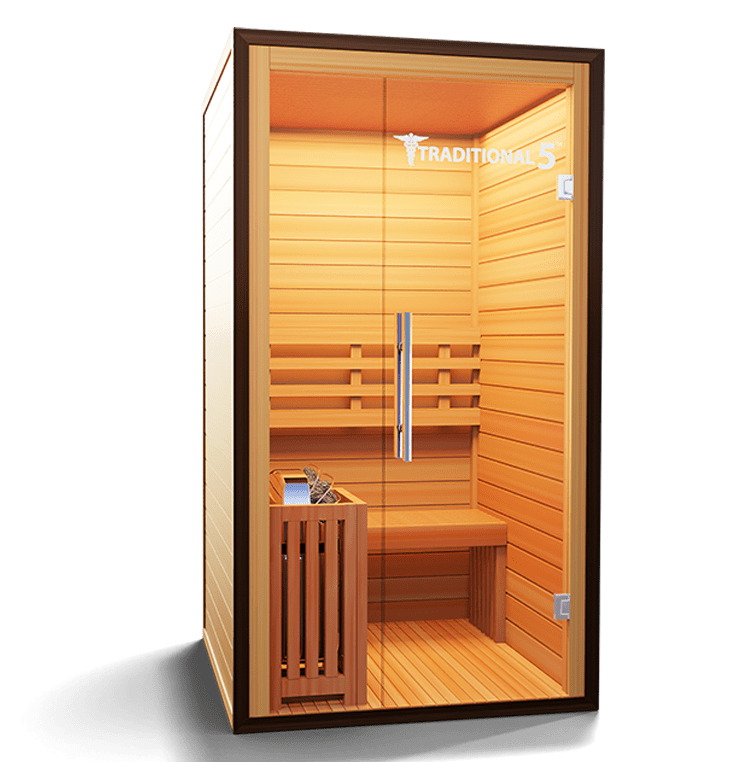How Traditional Sauna can Save You Time, Stress, and Money.
How Traditional Sauna can Save You Time, Stress, and Money.
Blog Article
The Buzz on Traditional Sauna
Table of ContentsHow Traditional Sauna can Save You Time, Stress, and Money.Rumored Buzz on Traditional SaunaThe Greatest Guide To Traditional Sauna9 Easy Facts About Traditional Sauna DescribedNot known Details About Traditional Sauna
Most of the weight lost in a sauna is water loss and is re-gained upon rehydrating. However, undoubtedly sauna can be an integral part of a healthy and balanced weight management program. To look at the differences between conventional and IR saunas, I will separate these into verifiable, theoretical, and fabricated differences.Hence, the best factor in the saunawhich goes to the ceiling straight over the sauna heateris normally in between 185 and 190 F. Claims that a typical sauna goes beyond 200 F is merely not real and not relevant for electrical saunas offered in the US. The temperature for a far-infrared sauna is typically set between 120 and 140 F; however, unlike the traditional sauna, the objective in and IR area is not to accomplish a high temperature level.

When a traditional sauna has actually been correctly heated up, the sauna wall surfaces are warm, the air temperature level has actually achieved established temperature level and the rocks are incredibly warmed. As an intriguing side note, the heated wall surfaces and the rocks are producing far-infrared warm, integrated with the warmed air, to produce an "enveloping heat".
The Best Guide To Traditional Sauna
When the heat is accomplished, the components cycle on and off to keep the heat. Many typical sauna customers enjoy pouring water over the rocks to develop steam to elevate sauna humidity levels. The benefits of putting water over the rocks include: making the area much more comfy, dampening the nasal flows, and enabling the usage of aromatherapy by mixing crucial oils with the water.

When the energy goes into the body, it creates the body temperature level to boost and eventually leads to sweating. In an infrared sauna it is essential for the emitters/heaters to continue to be on virtually frequently. Because there is no mass of rocks to maintain heat, the sauna will certainly cool if the emitters turned off.
Some Known Factual Statements About Traditional Sauna
As pointed out above, the sauna bather in an infrared space wishes to place himself in front of operating emitters to get maximum benefit from the warm. The home heating time for both rooms can be very different, depending on how the areas are utilized. For a typical sauna, a bather needs to permit 30-40 minutes for the space you can look here to achieve a link desired temperature and to effectively pre-heat the rocks.

A well constructed sauna will usually achieve a temperature of 150-160 F in about 30-40 minutes. For hotter temperature levels, the space might require to warm for a longer duration.
To some, 15 minutes was "thrown away" while the infrared power heated the wood panels instead of heating up a body, while others discover a pre-heated area to be a lot more comfy and believe an elevated starting temperature level is essential to start sweating. The size of advised usage for every room is roughly the very same (10-15 mins per session); however, as a result of the lower air temperatures and the capacity to feel the results of infrared warm much faster than a conventional sauna, it is not uncommon for a person to invest a total amount of 20-30 minutes in an infrared sauna.
The Ultimate Guide To Traditional Sauna

The average expense per kWH of power in the united state is around $0.11, so a 4.5 kW heating system will set you back approximately $.50 to compete one hour, if the heater runs continuously for one hour. Generally a sauna heating unit will compete 75% of the initial hour and 50% of succeeding hours on considering that the aspects cycle once click over here the set temperature is achieved.
A two person far-infrared room is usually literally smaller than a standard sauna, frequently regarding 4' x 4' or smaller. The IR furnace is commonly 1.5-1.7 kW using a 120 volt 15 amp plug-in solution. Given that the room can be used earlier than a sauna space, we will assume the area is used for to of an hour consisting of warm up time.
There is a hardly ever talked about difference in the social experience between the 2 rooms. While our society has actually lost a few of the social benefit of the conventional sauna experience, it can be really socially fulfilling (Traditional Sauna). From family time in the sauna, to heart-felt discussions with better halves, to sauna partiesthe traditional sauna experience can result in intimate interacting socially
Get This Report on Traditional Sauna
A lot of higher end infrared areas consist of tinted light treatment, audio systems and full-glass fronts.
Report this page